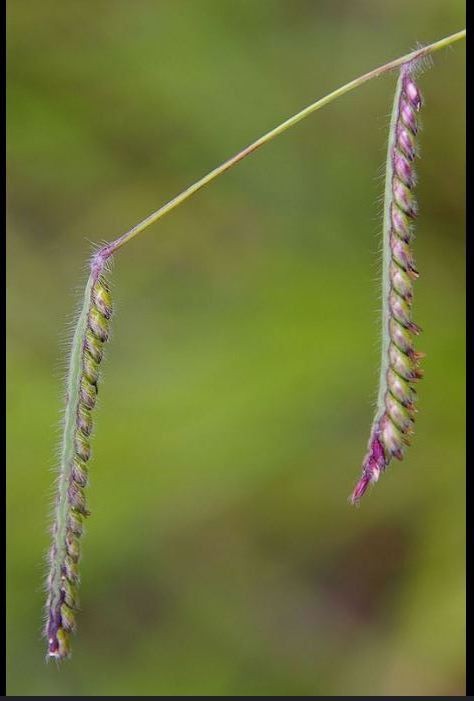"Palisade grass "
(Brachiaria brizantha)

Description
Urochloa brizantha (syn. Brachiaria brizantha) is a species of grass known by the common name palisade grass. It is often used as a forage for livestock. Other common names include palisade signal grass, bread grass, Mauritius grass, Surinam grass, large-seeded millet grass, big ashama, Ceylon sheep grass, St. Lucia grass (English), Palisadengras (German), braquiária, brizantão, capim-marandu (Brazilian Portuguese), zacate señal, zacate signal, pasto alambre, pasto señal, pasto braquiaria, pasto mulato (Spanish),kamuxi (in Angola), gawrare (in Nigeria), and ya siknaentontang (in Thailand). This rhizomatous perennial grass can reach 1 to 2 meters in height. The root system is up to 2 meters deep.The green leaf blades are up to 40 to 100 centimeters long and 2 wide, and are hairless or slightly rough-haired. The inflorescence is a particle up to 20 centimeters long and 3 wide, divided into several rolled, crescent-shaped branches. The spikelets are solitary, not paired, and they line the crescent-like panicle branches closely. The branches may have purple rachises and the spikelets may be purple-tinged. The native range of the grass is tropical and southern Africa.It has been purposely introduced to many other parts of the world, including South America and the Pacific. It is the main forage used in Brazil, in an area larger than 70,000 km2. It is adapted to grassland and woodland habitat. It is a warm-season grass that tolerates only light frost. It survives drought better than many other tropical grasses.It will grow in many soil types, but not infertile soils, and it usually requires supplemental nitrogen in cultivation. It can stand some shade and some varieties can tolerate mild flooding. Urochloa brizantha is for some authors syn. with Brachiaria brizantha, since the genera Urochloa and Brachiaria are similar in some aspects. A recent phylogenetic analysis concluded that Brachiaria and Urochloa are a monophyletic group, along with Eriochloa and Melinis, and that further molecular and morphological work is needed to establish clear relationships. This grass is used to feed livestock. It is grown in pastures for grazing and cut for hay and fodder. It is resistant to grazing pressure. It is nutritious and palatable. The grass is also used to feed rabbits. Cultivars include 'Marandú', 'Gigante', 'Insurgente', 'La Libertad', 'Serengeti' and 'Karanga'.
Taxonomic tree:







